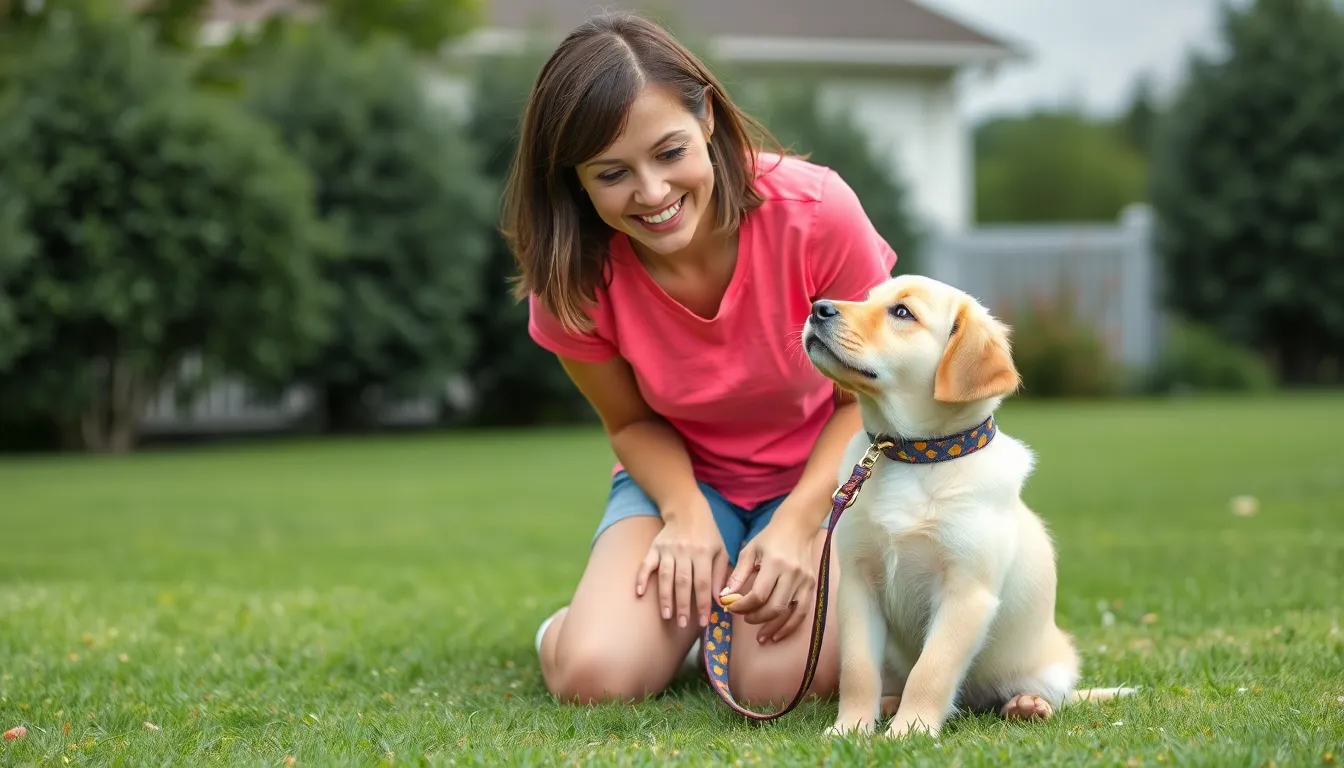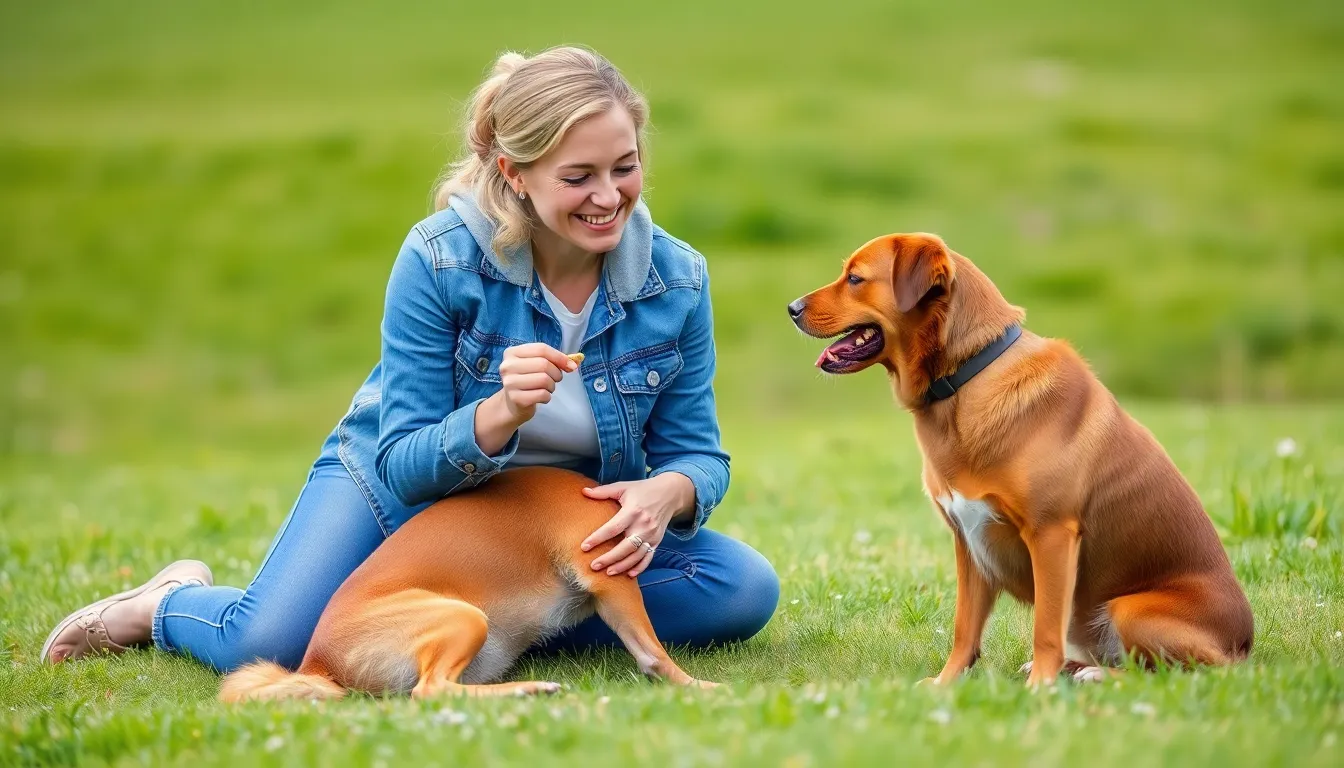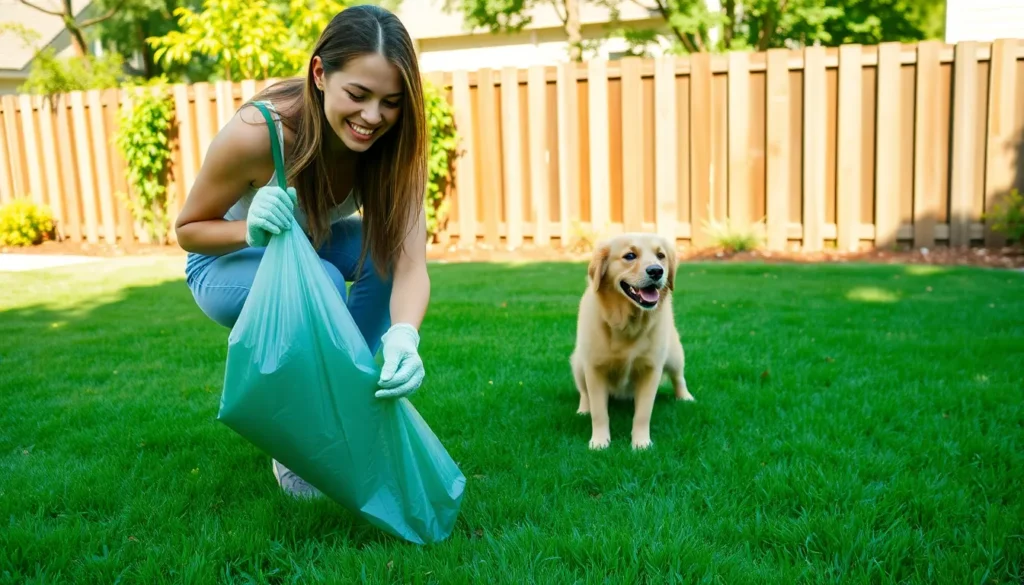Training a dog can be one of the most rewarding experiences for both the pet and the owner. It’s not just about teaching commands; it’s about building a strong bond and fostering good behavior. With the right techniques, anyone can transform their furry friend into a well-mannered companion.
Whether it’s a playful puppy or a stubborn adult dog, effective training tips can make all the difference. Understanding canine behavior and employing positive reinforcement techniques can lead to lasting results. This article will explore essential dog training tips that can help any owner navigate the journey of training with confidence and success.
Table of Contents
ToggleEssential Dog Training Tips
Dog training involves understanding canine behavior and creating a healthy environment for learning. Utilizing effective techniques fosters a strong bond between pets and their owners.
Understanding Your Dog’s Behavior
Understanding a dog’s behavior is crucial for effective training. Recognizing body language, vocalizations, and other signals can guide training strategies. For instance, a wagging tail usually signifies a happy dog, while raised hackles may indicate anxiety or aggression. Observing these signals helps owners tailor their approach to meet their dog’s needs, ensuring lessons resonate.
Creating a Positive Training Environment
Creating a positive training environment encourages learning and builds confidence. Set aside a distraction-free area with minimal noise, allowing the dog to focus. Use treats and praise as rewards for good behavior, reinforcing desired actions. Training sessions should be short—around 5 to 10 minutes—to maintain the dog’s attention. Consistency remains key; frequent practice solidifies skills and strengthens the bond between owner and dog.
Basic Commands Every Dog Should Know

Teaching basic commands forms the foundation of successful dog training. Commands like “Sit,” “Stay,” “Come,” and “Heel” play key roles in effective communication and ensure safety.
Sit and Stay
“Sit” commands a dog to lower its rear to the ground. Hand signals can enhance this command. To train, hold a treat above the dog’s nose and move it back toward the tail; as the dog sits, reward immediately.
“Stay” reinforces a dog’s ability to remain in one position until released. Start with the dog in a sitting position, then take a step back. If the dog remains still, reward with a treat and praise. Gradually increase the distance and duration.
Come and Heel
“Come” directs a dog to approach the owner. Use a cheerful tone while calling the dog. Reward the dog for coming close, incorporating varying distances and distractions for practice.
“Heel” positions the dog at the handler’s side while walking. Start by walking forward and encouraging the dog to stay close. Use treats to reward the dog when it walks at heel position. Consistent practice ensures the dog learns to follow this command smoothly.
Advanced Training Techniques
Advanced training techniques enhance a dog’s skills and improve the bond between pet and owner. Employing these methods encourages positive behavior and fosters confidence.
Leash Training Tips
Leash training focuses on teaching dogs to walk calmly and obediently while on a leash. Key strategies include:
- Start in a Quiet Area: Begin training in a low-distraction environment, allowing the dog to focus on commands and the owner.
- Use a Suitable Leash and Collar: Choose a comfortable collar and a durable leash. A front-clip harness can prevent pulling and offer better control.
- Practice Loose Leash Walking: Teach the dog to maintain slack in the leash. When the dog pulls, stop walking until the leash is loose again.
- Reward Calms: Use treats and praise when the dog walks beside the owner without pulling. Reinforcing good behavior encourages the dog to repeat it.
- Gradually Increase Distractions: Once the dog masters walking calmly in a quiet area, introduce distractions gradually, such as other dogs or people.
Socialization Strategies
- Expose to Various Environments: Introduce the dog to different settings, such as parks, streets, and stores, helping them adapt to diverse situations and stimuli.
- Arrange Playdates: Schedule playdates with friendly, well-behaved dogs. Positive interactions with other dogs build confidence and social skills.
- Attend Classes or Groups: Enroll in obedience classes or group training sessions, allowing the dog to learn in a structured setting surrounded by other pets and owners.
- Use Positive Reinforcement: Reward calm behavior during social encounters with treats and praise, fostering a positive association with new experiences.
- Monitor Body Language: Observe the dog’s body language during interactions. If signs of fear or aggression appear, calmly remove the dog from the situation to prevent stress or negative experiences.
Common Training Mistakes to Avoid
Training a dog requires patience and consistency to be effective. Avoiding common mistakes can significantly improve the training experience and outcomes.
Overcorrecting Your Dog
Overcorrection can lead to confusion and anxiety. It’s vital to respond appropriately when a dog exhibits unwanted behavior. Instead of harsh corrections, use a gentle redirection to appropriate behavior. Rewarding positive actions reinforces the desired behavior. For instance, if a dog jumps up, immediately redirect its attention to a toy or command and reward calm behavior. This approach encourages a trusting relationship between the dog and trainer.
Inconsistency in Commands
Inconsistency in commands can confuse a dog and hinder progress. Using different phrases for the same command leads to mixed signals. Establish clear, consistent cues for each command, such as “Sit” rather than alternating between “Sit down” and “Sit.” Ensure all family members use the same commands to promote a cohesive learning environment. Standardizing commands enhances communication and leads to more effective training sessions, fostering better understanding between the dog and owner.
Tools and Resources for Effective Training
Using the right tools and resources enhances dog training effectiveness. Various aids support both learning and communication, making training sessions more productive.
Recommended Training Aids
- Leashes and Collars: Choose a durable, comfortable leash and collar that fits securely. Harnesses can also provide better control for larger breeds.
- Clickers: Utilize clickers for precise timing during training. The sound reinforces desired behaviors, helping dogs make connections between actions and rewards.
- Treats: Select high-value treats that appeal to the dog’s preferences. Treats play a critical role in positive reinforcement, making them essential for training success.
- Training Pads: Use training pads for housebreaking, simplifying the process for indoor training. Pads encourage dogs to develop good bathroom habits.
- Interactive Toys: Incorporate interactive toys to stimulate a dog’s mind. Toys encourage engagement and help reinforce commands through play.
Online Courses and Guides
- Video Tutorials: Explore video tutorials covering fundamental and advanced training techniques. These visual aids demonstrate methods effectively, providing practical insights.
- Webinars: Attend webinars hosted by professional trainers. Webinars often address common challenges and offer solutions in real-time, enhancing the training experience.
- E-books: Access e-books focusing on specific training topics. E-books provide in-depth information and step-by-step instructions for various training scenarios.
- Forums and Communities: Join online forums or community groups for dog trainers. Engaging with other dog owners and trainers fosters sharing experiences and receiving support.
- Mobile Apps: Utilize mobile apps that track training progress. Apps help organize sessions, set reminders, and provide tips to keep training consistent and engaging.
Training a dog is a journey that deepens the bond between pet and owner. By understanding canine behavior and employing positive reinforcement techniques, owners can foster a trusting and effective learning environment.
Utilizing basic commands and advanced training methods not only enhances communication but also ensures safety and socialization. Remember that patience and consistency are vital to overcoming common training challenges.
With the right tools and resources at hand, every dog owner can embark on a rewarding training experience that benefits both them and their furry companion. Embrace the process and enjoy the companionship that comes with a well-trained dog.








